Student Blog
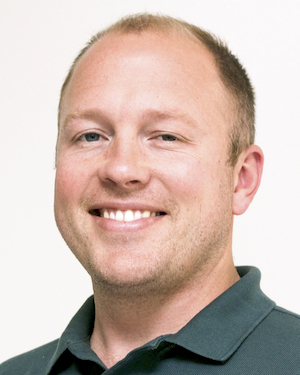
Having a Baby While in Grad School ⟩
November 14, 2018, by Evan
Life Hacks School/Life Balance
The biggest thing going on in my life at the moment is that my wife and I are expecting a baby girl this January. It will be our second (we also have a 2.5-year-old boy) and we are grateful that all signs so far point toward a healthy pregnancy. When sharing this news with my student colleagues, I get mixed responses. Of course, everyone is excited first and foremost. But then for some the excitement melts away into a touch of concern. One classmate last week even went so far to ask, “How are you going to manage it?”
My response is always the same: “Having babies in graduate school doesn’t have to be more difficult than having a baby with a full-time job!” In fact, in some ways it may even be easier. Let me explain:
USC CHAN OFFERS AN INCREDIBLY SUPPORTIVE ENVIRONMENT — most of my teachers have families of their own and have been very supportive about my journey into the occupational role of being a parent. Even though I am a male and not physically carrying a child, they recognize the importance of my presence and involvement during the critical moments of pregnancy, the birthing process, and early childhood. It’s wonderful to know that I will always be able to be there for my family without incurring unreasonable academic penalty.
THERE ARE OPTIONS — while I am electing not to take time off school, it was made clear to me from the beginning that it was an option. Students in the past have chosen to take a semester off class, or delayed a level II fieldwork, and then were able to pick back up right where they left off several months down the road. This is also true with regard to my student job. I am so grateful that my supervisor has given me some flexibility on hours during the month of birth.
BALANCE CAN BE ACHIEVED — of course grad school is academically rigorous, but I honestly find my live-work balance to be healthier now than it was during the years working a full-time job in the film business. Most days I get home between 5-6pm and have the opportunity to eat dinner, give baths, and put my son to bed. This simply would not have been possible in my old job. People always ask when I have time for schoolwork — let me tell you there’s plenty of time after bedtime for homework, especially when you can’t really leave the house!
So for me, having a baby in grad school is doable, and even preferable to trying to manage it while working full-time at my previous job. If anyone out there is hesitant about OT school because they are ready to start a family, I’d encourage them to not feel held back by those fears. Rest assured those feelings are normal — I had them too — but I’m here to tell you it’s possible to earn a master’s degree with a young family. (And even have fun in the process!)
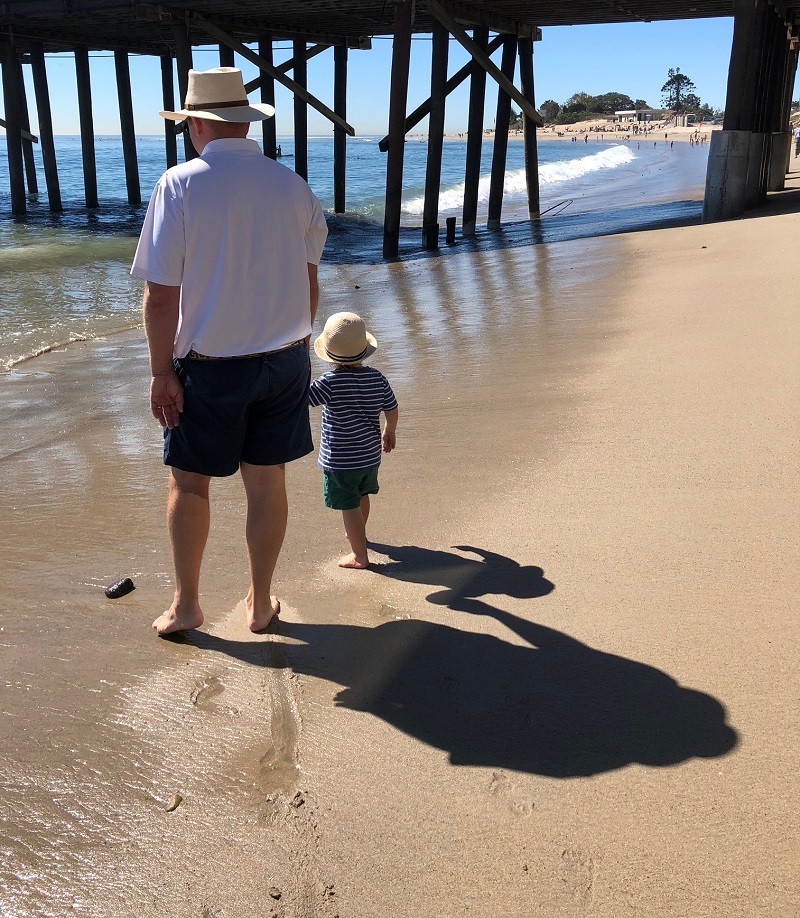
⋯
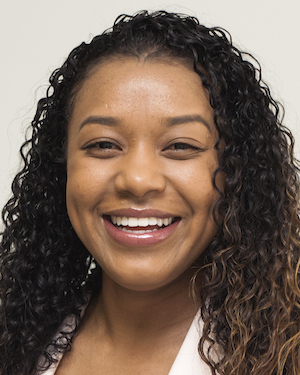
Infusing Yoga into Fieldwork ⟩
November 12, 2018, by Serena
I am completing my Level I Fieldwork and Jennifer is completing her Level II Fieldwork at the USC Kortschak Center for Learning and Creativity (KCLC) under the mentorship of a previous student ambassador, Dr. Rashelle Nagata. As mentioned in my previous post, the USC KCLC is an academic support center that addresses challenges related to academic performance such as time management techniques, procrastination, self-care strategies, and stress management skills.
Dr. Nagata is our wonderful Fieldwork Educator (FE). A FE, formerly known as a Clinical Instructor (CI), is typically an occupational therapist who mentors and supervises you during your FW experience. In the beginning of our FW, Jennifer and I worked together to build an occupational therapy informed yoga class that incorporated meditation, mindfulness, and gentle yoga stretches to provide a greater awareness of useful calming and alerting strategies that can be easily incorporated throughout the day.
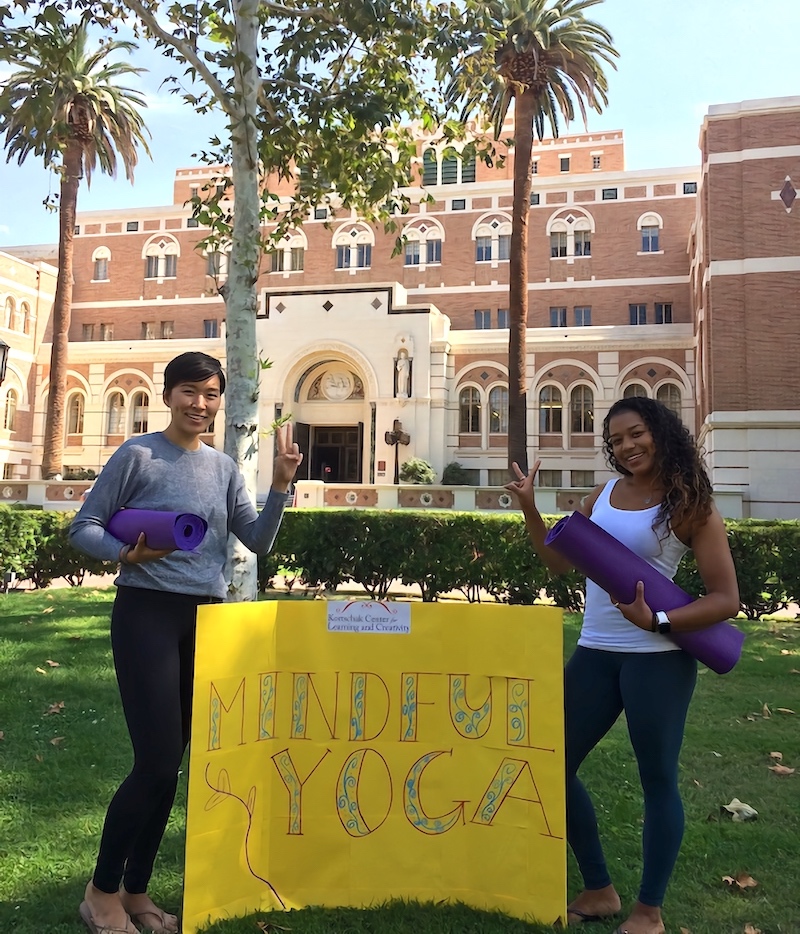
The yoga sessions, which are trauma informed, first begin with a mindful breathing activity, then leads into a guided meditation, and ends with gentle yoga stretches and poses. Throughout the session, aromatherapy and bells or Tibetan sound bowls are incorporated during session to bring greater awareness to the power of senses impacting a calm and alerting state. For example, we pass around lavender in the beginning to elicit a more serene vibe. Towards the end of the session, peppermint oil is offered to those wishing to return to an environment that requires a more alert state of being. We end with the sound of bells or Tibetan bowls, which have healing benefits such as decreasing stress and anxiety.
Namaste.
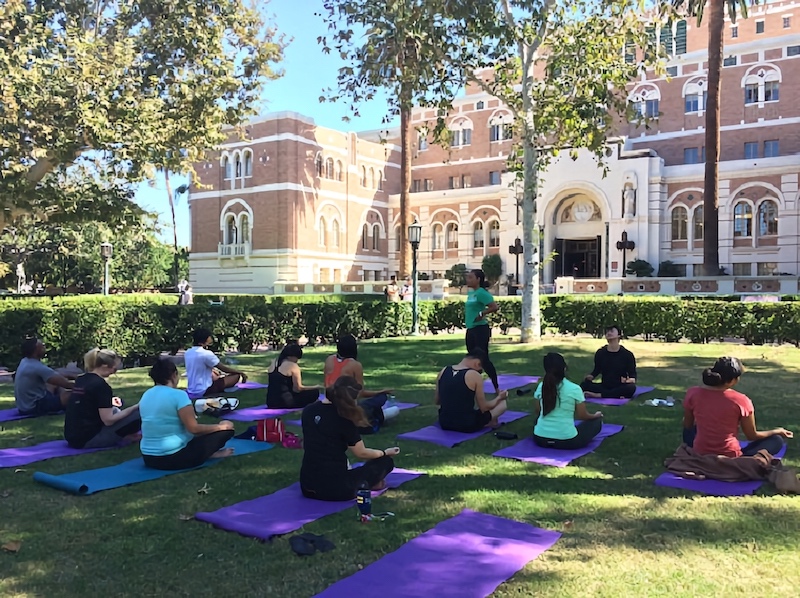
The yoga group comprised of undergraduate, graduate, staff, and faculty members performing gentle yoga stretches in front of Doheny Library on a beautiful sunny Southern California day!
⋯
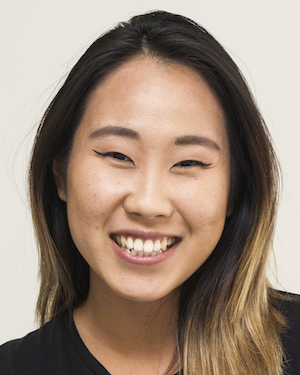
Can I Work In Grad School? ⟩
November 8, 2018, by Joyce
My answer to you would be that it depends. I know, everyone’s favorite answer to hear. However, I say it depends because it truly is dependent on the kind of learner you are and how efficient you are in managing your time.
In the beginning of the program (summer session) I chose not to work because of the intensity of the program (M-F 8AM-4PM). In addition to the academic and coursework, I was also couch hopping because I literally picked up my entire life and moved across the country. There was a lot of instability and uncertainty during that summer and if I were to add that extra dimension of work, I knew it would take a physical, mental, and emotional toll.
Thankfully I survived the summer program and in the fall semester, I began my Adult Rehabilitation Immersion. Each practice immersion varies but the Adult Rehabilitation one is known for its intense studies in various medical diagnoses and conditions. Therefore, I decided that this semester would not be the best semester to start working because I would much rather absorb and obtain this information to the best of my abilities without any other distractions. Not working and taking out additional loans opened up space in my schedule to read my notes and study a few extra hours.
It was when I began the Mental Health Immersion that I felt that there was enough room and space in my life to add a part time job. Therefore, I began to work as a hostess at a Korean BBQ restaurant. My shifts required me to be in on the weekends. I had a great time, it was nice to be involved in something non-OT related. Don’t get me wrong, I love the profession and I love the people that I interact with but working at a restaurant brings about a different kind of aura. I met many international travelers (as our restaurant is rated 4.5 stars on yelp and highly popular amongst tourists!). I enjoyed the customer service aspect and even casually conversing with people as they walked in and out of the restaurant.
I came home pooped from standing all day but it was nice to be able to make some money and use a different set of skills. So to answer your question, yes it is possible to work while you study. But in the midst of it, remember that you are still a student first and that your academics takes priority. Something that I have learned to do is weighing the pros and cons of the situation. Is it worth losing three hours of sleep every night to work a few hours and do homework to earn maybe $50? I guess it would depend on the kind of part time job you decide to pick up as well. I have classmates who babysit for higher rates for shorter times and others who work longer shifts in the food industry but making most of their income on tip.
So, is it doable? Yes, but it depends.
⋯
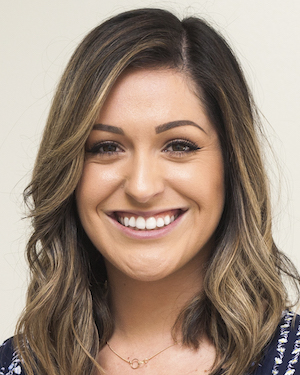
What is it like to be a Student Ambassador? ⟩
November 4, 2018, by Melissa
Hey guys! For this post I wanted to talk a bit about what I do as a Student Ambassador. I feel like we do a bit of everything, therefore I wanted to offer some more insight in case any of you would like to pursue this position when you’re in the program!
First, I want to provide a bit of background information on my journey to becoming a Student Ambassador. When I was first considering applying to USC, I attended an information session and had my first interaction with an Ambassador. I remember thinking, “Wow, that’s such a cool opportunity for students!” but didn’t think much about it after that as I was more concerned with getting into the program at the time. As the application date got closer, I scheduled a meeting with Dr. Carley — the previous Director of Admissions — and a tour with a Student Ambassador. It was an incredibly personal experience; Dr. Carley answered some of my burning questions about the application, and the ambassador shared about her experience with the program and answered my questions regarding life as a student. It was then that I realized how badly I wanted to get into the OT program at USC, and how much I would love to be a Student Ambassador.
Fast-forward two years, and here I am! It’s still pretty surreal to think back to that time, and I’m incredibly grateful to be able to be a part of this program and to be an Ambassador. This position gives me the opportunity to combine my passion for the program and my passion for occupational therapy all into one!
So what exactly do we do? Well, I wasn’t kidding when I said that we do a little bit of everything. We help with information sessions, we correspond with potential applicants and admitted students, we give presentations to pre-health and pre-OT clubs to spread the word about our program and OT as a whole, we present and table at conferences and grad fairs, we give tours to students and their families, and help with all sorts of events! Although there are things that we all do as Ambassadors, there are also things that are unique to each of our positions! For example, Joyce is in charge of all things social media, Serena and I help the admissions team and have Diversity projects that we work on, Jess is responsible for event planning, and Evan works on the content calendar! We each get to work on things that appeal to us and that we have a skill set in, which makes the job even more interesting. In addition, we have an Ambassador from the OTD program as well as the MA-I (post professional) program, which makes us a pretty well rounded team. They each correspond with students that have questions about their specific programs, and have their own individual projects as well.
Ultimately, this job provides us with a great opportunity to advocate for our profession, to increase awareness about OT and the Chan program, and to give potential applicants information about our program from a student’s point of view, among many other things. I’m very lucky to be a part of a team that is made up of such kind, hard-working, and passionate people that make the job so much fun.
If you have any questions about the position or about scheduling a tour with us, feel free to reach out!
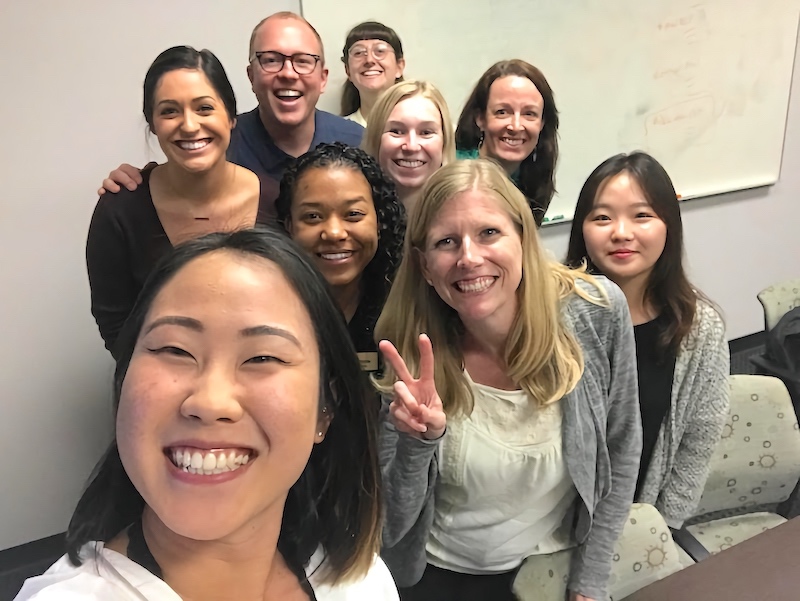
⋯
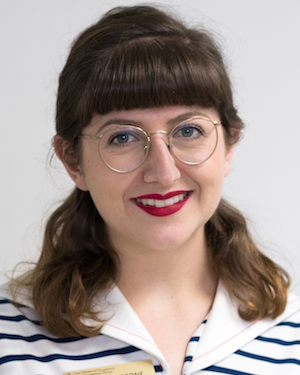
Presenting at Conference ⟩
November 2, 2018, by Antonietta
The past few weeks have been so exciting (and exhausting). I presented at two conferences; the first was AOTA’s Education Summit, in Louisville, KY, and the second, closer to home, was the OTAC’s annual conference in Pasadena. It was an amazing experience and I wanted to share a little bit about it!
In the second year of the Master’s program, I elected to do Directed Research (OT590) with Dr. Rafeedie, completing 2 units in the Fall and 2 units in the Spring. As I’ve mentioned before, I’m interested in education so I created this experience to do some research about pedagogy and best practices when it comes to simulation. My inspiration for this topic stemmed from being frustrated in some of my courses when asked to role play with my peers. I was quite uncomfortable role playing and I was not convinced it added my clinical skills as a future occupational therapist. From this seed of frustration grew the foundation of our presentations: a low to high fidelity chart for the different types of simulations, an evidence matrix outlining the support for simulation in education, recommendations from the literature about best practice surrounding this instructional method, and finally a piece that I was not expecting at all when I started out. This unexpected piece was the most interesting of them all . . . looking at simulation from the disability perspective.
Upon reflection, this perspective is the root of why I was uncomfortable with simulation in class. Although the goal was to learn, it felt a little bit like a mockery when I pretended to have a prescribed difference. It took looking at this in class requirement from an outside, academic point of view, and discussing it with my mentor to be able to identify the source of this discomfort and start to think critically yet constructively about it. We went to the disability literature and discovered that since the 1990s it has contained a call to stop disability simulation. It cites research which has shown that disability simulation has many unintended consequences. So, we looked further, read more research, and started to build an idea of what types of simulation add to positive educational outcomes and how we can use simulation respectfully and ethically. The bottom line is, we need to be coupling simulation with lived experiences perspectives. As OTs, we valued the phenomenological components of care and recovery that simulation does not provide. These nuances, which simulation simply cannot capture, are what sets us apart from other healthcare professionals. We must be mindful about explicitly including the disability perspective in our curriculum and learning activities.
It was exhilarating to share what we found and developed at the two conferences. Our audiences were very active participants with many questions and different points of view to share. This has been an amazing way to end this project (for now) and it was only possible because of Dr. Rafeedie and USC, so Fight On!
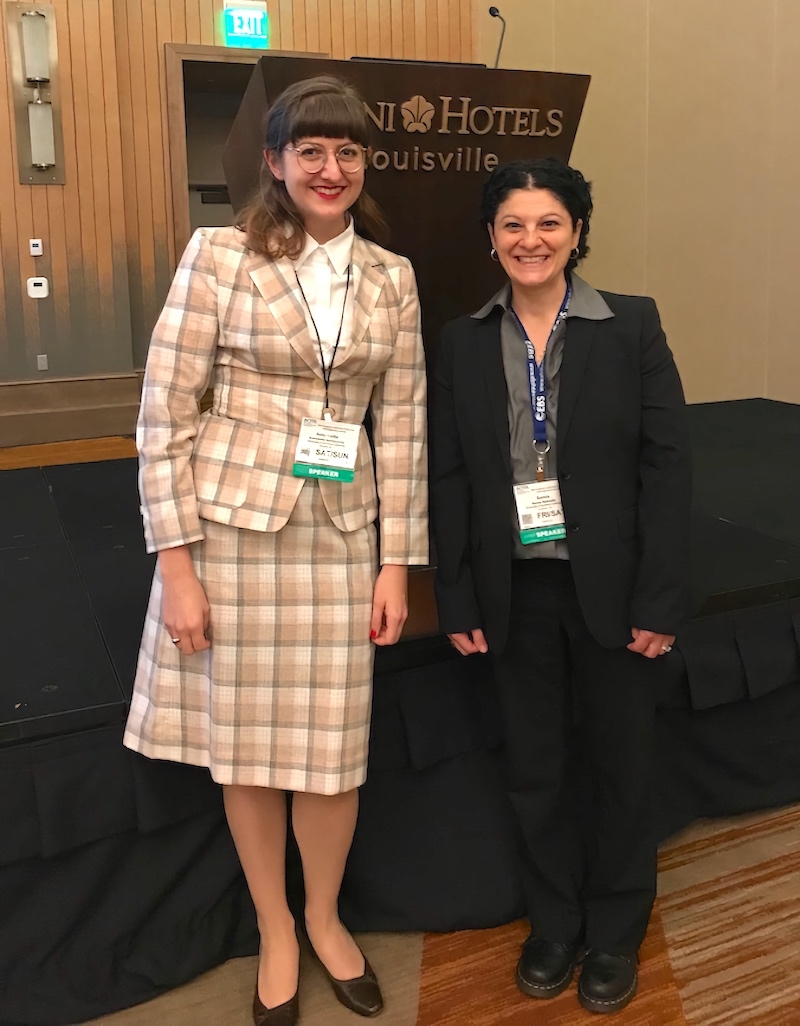
⋯





